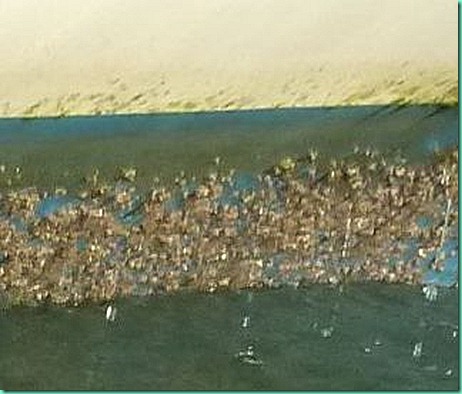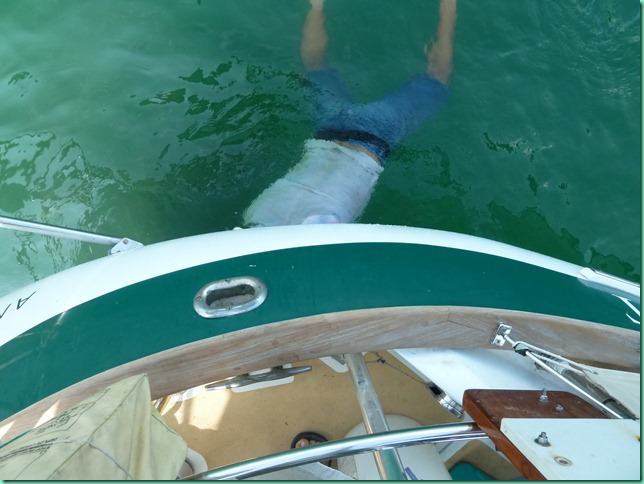We’re living in the lap of luxury here in Cartagena, during our time in the boatyard, at least for three weeks. We’re in a Gleaming Contemporary Studio Apartment full of Nice Stuff, on the 12th Floor of edificio Vista in the Manga district, up where the pelicans fly, with a Most Scenic View Over Historic Cartagena and Castillo San Felipe. We stroll in after our 15-minute bus commute from the boatyard, take off our clothes and put them in the Washing Machine, get a Cold Drink with Ice from the Full Refrigerator (Shelves! Light! Self-Cleaning!) and then drift up one floor to the Rooftop Jacuzzi and Infinity Pool – fine places to bask and admire the sunset pastels and rehydrate after a hot day. The Big-Headed Shower with Hot Water pours down unstintingly, although the 5×5 (that’s feet!) Mirror has Shocking and Malign powers. Sometimes we even eat Food Not Prepared At Home. Then we Relax in Air-Conditioned Comfort before our various Entertainment Devices until the Lure of the Most-Comfortable and Well-Clad King-Sized Bed proves irresistible.
And it’s all ours until the middle of November, when we retreat back down to earth. Life is Grand.
The voyeur in me is happy for such a good spy perch, the neatnik (yes, there is one!) mops and fluffs and makes the bed every morning; the wastrel lavishly fills the spaghetti pot all the way full of water, and has left lights burning in non-occupied areas. Doug claims that somewhere in India there’s a power failure because of me. I think he’s going to wear out the TV remote. For extra fun we take the trash to the chute and listen as it tumbles down 12 stories. As you can see, we’re Living Large.
We’re supposed to be strolling the town in the evenings, but between the nice digs, the pool and the balcony and the luxurious ease and ambiance of our aerie, not to mention the fast internet, the satellite TV, and climate control, we generally stay put and let the entertainment come to us. The big sky, the passing scene, we gawp at it all. Last night Cartagena delivered fireworks, front and center.
Meanwhile, the other half of life is at Manzanillo Marina Club down in the Bosque barrio, where Galivant is propped on a few locally-built jackstands. Its innards are torn open and it’s a veritable dustbowl on deck as we make some fiberglass repairs and get ready for painting.
“We” mainly means Flavit and his crew who are doing the dirty work. Not doing the work turns out to also be a chore. Every day offers a new illustration of the ways in which assumptions can mutate. Good thing that we’ve gotten a little less anal as we ourselves become a little less perfect. ‘It’s only a boat’ we remind ourselves. And a good thing too that Flavit is so pleasant and accommodating. Doug has lots of carpentry projects, and I am relieved to be the designated shopper, researcher and communicator. I can do a lot of that from ‘home’.
The fact that we can escape the heat and grime each day has a lot to do with our mellowness. I sure will be sorry to descend that elevator for the final time, get buzzed out the plate glass doors by the security guard, knowing that if my smiling face appears the next day I won’t get past the desk!
A few associated photos can be found here:
http://galivant.smugmug.com/Other/CartagenaRoomWithAView/20060616_f55c83
PS: even on the twelfth floor, the ants trek up over the edge of the balcony. How did they know I was here?

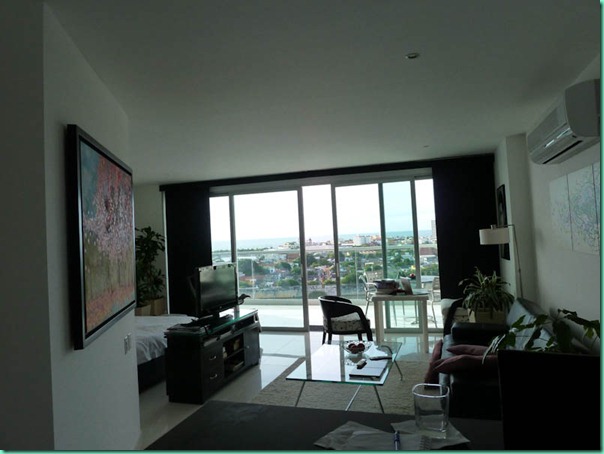


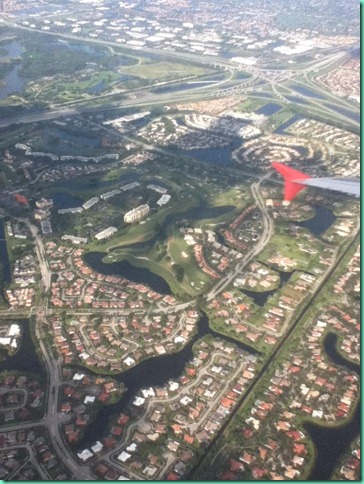
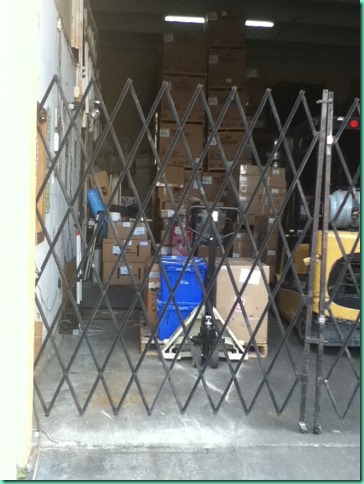
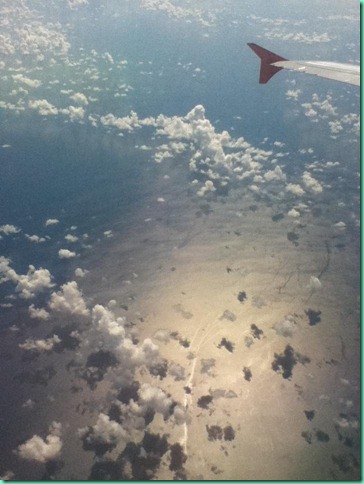

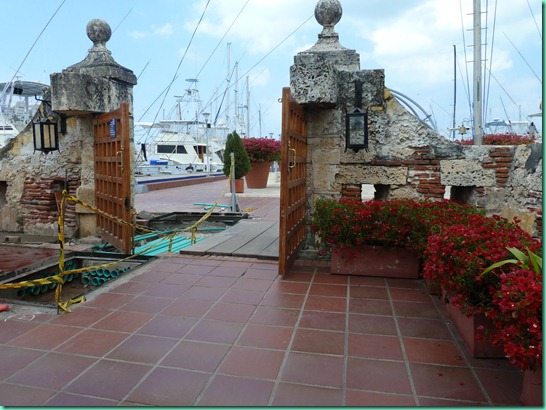

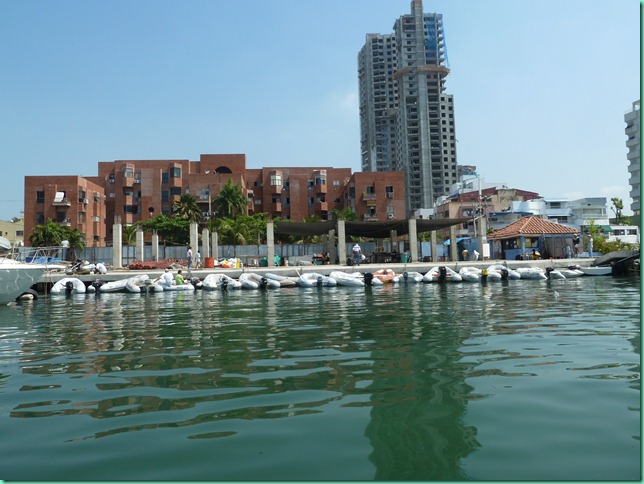
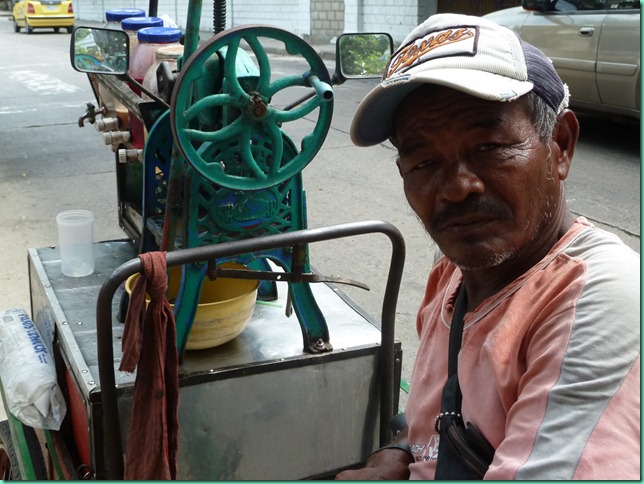
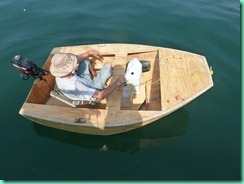
![P1010122-Cartagena-from-Club-Nautico[2] P1010122-Cartagena-from-Club-Nautico[2]](http://lh4.ggpht.com/_ez6anYPO9Yo/TXId2eWwBiI/AAAAAAAAAaQ/xAprYilEqMw/P1010122-Cartagena-from-Club-Nautico%5B2%5D.jpg?imgmax=800)
